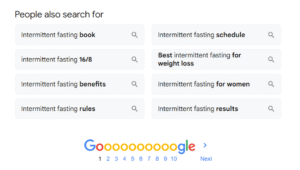
You’ve got thoughts. Maybe even a few drafts. But when it comes to actually publishing something, you freeze: Where do I post it? Will anyone read it? What if it looks unprofessional? Here’s the truth: Every blogger started out clueless. What matters is starting.
This guide will walk you through how to start blogging as a beginner, minus the pressures and perfection.
TL;DR
- You don’t need a niche or fancy site to begin blogging. Just start writing from your life or interests.
- Pick a platform that feels light and flexible. Free tools like WebLearners.com or WordPress.com are great for beginners.
- Blog consistently with a small habit. Tie it to an existing routine, and start with short notes or drafts.
- Write in your real voice. Hinglish, sarcasm, or poetic, your tone is your personal brand.
- Structure and SEO matter. Use headings that match user intent and Google patterns without copying.
- Publish, don’t obsess. The more you publish without fear, the more confident and creative you’ll get.
How to Start Blogging as a Beginner in 2025?
Blogging might seem old-school, but the numbers say otherwise. In 2024 alone, over 4.4 million blog posts were published every day, and that number is still climbing. What’s even better? Recent data shows that nearly 60% of bloggers are earning from their content, proving that blogging isn’t just about passion anymore, but it can pay off too.
So, from self-expression, freelance visibility to a side hustle, blogging is still very much a relevant, beginner-friendly medium.
Before you write your first post, let’s break down the few basics you truly need to begin:

1. A Topic
Most people never start blogging because they think they need a master plan, a niche, a logo, and probably a literature degree (just in case). But trust us: you don’t need any of that to get going. Blogging, at its core, is all about showing up with your words.
So, before you overthink yourself out of it, here are four simple things you actually need to start. Blogging starts with you. Not algorithms, not SEO tricks. You don’t need to chase trending hashtags or write “what people are searching for”.
As a beginner, your best blog topics come from real life, the things you already love, notice, or rant about.
Try This
Ask Yourself
- What’s something you keep explaining to friends?
- What’s a topic that frustrates or excites you?
- What do people often ask your opinion on?
Your first 3 blogs can easily come from there.
2. A Platform
For most beginners, the writing part isn’t the hard bit. It’s the “Where do I post it?” stress that throws people off. Should you make a full website? Should you try Blogger? Or maybe just write in Notion and share it with friends?
When you’re just starting out, don’t overthink aesthetics or features. Choose a space that lets you focus on writing, not on settings.
Try This
If you’re looking for a space that’s beginner-friendly and built to grow with you, check out TheWebLearners.com. Sign up (it’s free), and start writing. The best part is that your blogs will not just sit there, but they’ll soon be organised into categories and transformed into a sleek online portfolio.
3. A Routine
Most people treat blogging like a resolution: go hard for a week, then vanish.
What you actually need is a mini habit, something that fits inside your week without feeling like a chore. A routine doesn’t have to look like discipline; sometimes, it’s just knowing when your brain feels light and your thoughts start forming naturally. That could be late nights, lunch breaks, or that 20-minute gap between dinner and doomscrolling.
Try This
Pair blogging with an existing habit, like post-dinner scroll, your metro ride, or winding down before bed. Don’t aim to write full-length blogs at once. Just dump ideas, headlines, or funny thoughts in your notes. Even if you add just a headline or 2–3 bullet points, that’s progress.
4. A Mindset
In India, we’re wired to expect results. You put in effort; you expect marks. You work hard; you expect approval. But blogging flips that script because here you will write things that matter to you, and sometimes, no one will respond. It’ll feel thankless. But that’s also when most people quit. The ones who keep showing up despite the silence? They’re the ones who start building something real.
Try This
The next time you publish a blog, make a deal with yourself: no checking stats or rereading it for 48 hours. Let it live. Let it breathe. This gentle pause helps you stay grounded in the joy of writing, not the numbers.
Blogging doesn’t have to be boring or basic. In fact, the right tools can totally level up your vibe.
If you’re into experimenting with new-age stuff that goes beyond Google Docs and Grammarly, you’ll love this compilation of Free AI Tools to Boost Creativity.
6 Steps to Write Your First Post
So, you’ve gathered the essentials: a platform, a routine, a tiny spark of confidence. Now comes the part that feels the scariest: writing. Don’t aim for perfection. Just start. You’re not writing the Constitution. You’re just sharing something you care about in your voice and your words.
Here’s a simple flow to help you go from blank screen to published post without losing your mind halfway:
1. Pick a Beginner-Friendly Topic
Don’t stress too much about choosing a “forever” niche right now. Just pick a topic you enjoy talking about and have some experience with. From books, tech, productivity, finance, self-growth, food, travel, to even “intermittent fasting”. What matters is: can you write more than one post about it in the future? If yes, that’s a solid starting point.
Check the Reddit thread for your favourite topic to get inspiration. Let’s search “intermittent fasting on Reddit” on Google. Go to the chat section, and watch out for recent discussions. Get inspiration, and try to provide direct answers to Reddit users’ queries in your blog.
2. Do a Keyword Research
Ever wondered why some blogs magically show up at the top of Google? It’s not magic; it’s good keyword research, my friend. You can use free tools like Google Keyword Planner, Ubersuggest, or even Keyword Surfer (a Chrome extension) to see which phrases are getting searched. But if SEO tools feel heavy right now, a quick Google search will do; the “People Also Ask” section alone can spark plenty of keyword ideas.
Suppose you are trying to write on “intermittent fasting”, in India, the “People Also Ask” section will look like below:

3. Structure Your Blog with “This will rank” Headings
Start with a short intro: why this topic? Then add 2–3 headings or sections that support it. End with a short takeaway or your final thoughts. Clutter is your enemy. Each sentence should have a job. Each section should have a reason to exist.
Delete anything that breaks the flow or forces your reader to reread. Your reader should never feel lost while scrolling; that’s your main job as a writer.
To get help, you can check the first five to six blog pages for “intermittent fasting”. Suppose, from India, we are getting these blogs’ URLs:
Feel free to check the above pages’ outline and craft a similar (not the same!) 4-5 H2’s and H3’s that consolidate all the outline without redundancy. Let’s say, your organised outline will be:
- What is intermittent fasting(IF)?
- Benefits of IF
- How does IF work?
- What do you need to know about it? (Myths and facts)
- Is it right for you?
- Conclusion
- FAQs
You can see from the above outline, it has everything, but with tweaks! In this way, Google will know that your content possesses the same value as the ranking blogs.
4. Write the Way You Speak
Formal English isn’t a requirement. Your blog is your personality on a page. So if you use Hinglish in real life, let it flow. If your style is sarcastic or poetic or brutally honest, just embrace it. The more authentic you sound, the more people connect. Because in blogging, your tone is your brand.
And when you’re ready to put that voice out there, platforms like Web Learners give you a place to do just that. Here you can post your blogs, get seen, and slowly build your presence as a writer.
5. Make Final Edits
Before you share your blog with the world, give it a little love. Fix awkward sentences, remove anything that feels “extra”, and look for lines that can be trimmed or sections that sound too formal. Now read it like someone who’s not you and ask yourself: Would you actually enjoy reading this blog if you stumbled upon it online? Does it flow like a conversation or drag like a lecture?
Most people confuse editing with showing off their English skills, but mostly it’s about making your post fun and friendly to read. So make sure your blog follows that.
6. Hit Publish
Once you’ve written your post and checked for basic errors, don’t keep hovering over it for hours. Publish it. Then shut your laptop, make yourself a cup of coffee, or take a walk. Ultimately, your brain needs to associate blogging with relief and not anxiety and perfectionism. And for that, you have to stay consistent. The more often you publish without obsessing, the more fearless you become as a writer.
If you’re holding back because of self-doubt or overthinking, that’s okay. You’re not alone. You might want to read this gentle piece on Mental Health 101. It’s a safe space we created just for readers and writers like you.
Final Thoughts
Maybe you’re still figuring things out. Maybe this blog gave you some direction. Either way, the next step is simple: try. Write that one post. Don’t overthink. That’s the real secret behind how to start blogging as a beginner: you just begin. And if it helps, remind yourself: nobody starts perfect.
So tell us, have you ever written something and not posted it? What held you back? Share it in the comments.
P.S. When you’re ready to hit publish, Web Learners is here to welcome your very first post.
FAQs
Q1: How to start blogging as a beginner and make money?
A1: Start by choosing a niche you enjoy and have knowledge about, like travel, tech, or finance. Create a blog on platforms like WordPress or Blogger. Publish high-quality, SEO-friendly content consistently. Once you gain traffic, monetise through ads (like Google AdSense), affiliate marketing, sponsored posts, or selling your own products or services.
Q2: How to start a blog for free?
A3: Use free platforms like WebLearners.com, WordPress.com, Blogger, or Medium. Simply sign up, choose a blog name, pick a free theme, and start writing. You won’t get a custom domain (like yourblog.com) unless you upgrade, but it’s a great way to practice and build content before investing money.
You can get some brainstorming ideas from this video:
Q3: How to start a blog and make money?
A3: To earn from blogging, follow these steps:
- Pick a profitable niche (e.g., finance, health, career).
- Buy a domain and hosting (or use a free platform initially).
- Publish quality, helpful content.
- Promote using SEO and social media.
- Monetise with affiliate links, display ads, digital products, or coaching.
Q4: What are some blog examples?
A4: Here are a few popular blog examples across different niches:
- Tech: TechCrunch, Wired, TheWebLearners
- Personal finance: NerdWallet, The Penny Hoarder
- Travel: Nomadic Matt, The Blonde Abroad
- Health & wellness: TheWebLearners, MindBodyGreen, Nerd Fitness
- Marketing: HubSpot Blog, Neil Patel Blog







